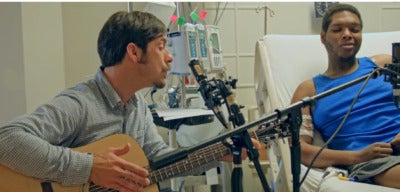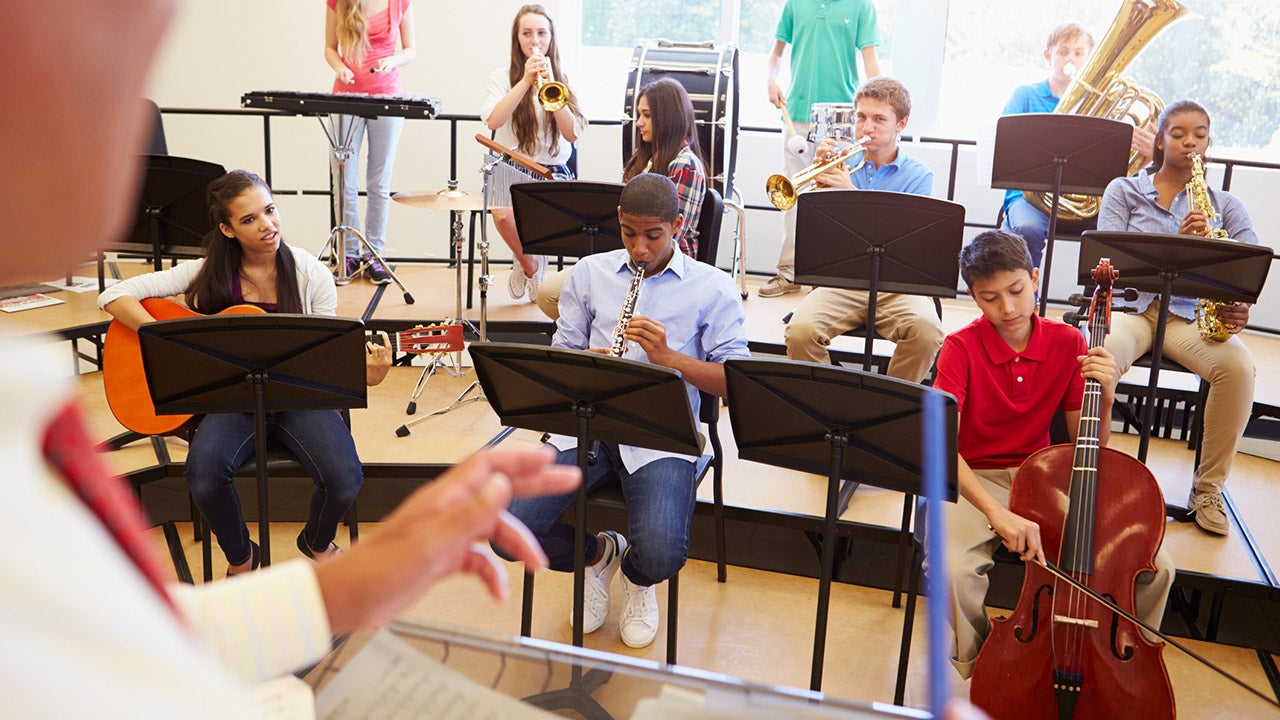In 2019, the Aspen Institute joined forces with Johns Hopkins Medicine to develop an ambitious plan for an emerging field in health: the neuroarts. The initiative, called the NeuroArts Blueprint, aims to strengthen the scientific research on how the arts impact the brain, body, and behavior and how to use this knowledge to improve health and wellbeing around the world.
Over the past two years, the initiative engaged global leaders in science, art, healthcare, technology, and other sectors to build a roadmap for the future of the field—one where the arts become a mainstream part of medicine and preventative care.

Courtesy of University of Florida Health Shands Center for Arts in Medicine
Led by Ruth Katz, executive director of the Institute’s Health, Medicine & Society Program, and SusanMagsamen, executive director of International Arts + Mind Lab at Johns Hopkins University School of Medicine, the initiative recently released its initial report: NeuroArts Blueprint: Advancing the Science of Arts, Health, and Wellbeing. The report presents both a five-year plan and a longer-term vision of a mature field of neuroarts.
Four pioneers in the sciences and the arts helped to guide the work as Advisory Council cochairs: Renée Fleming, Eric Nestler, Michael Paseornek, and Anna Deavere Smith. We recently spoke with Renée Fleming, the renowned soprano and artistic advisor to the John F. Kennedy Center of the Performing Arts, about the NeuroArts Blueprint.
Responses below were edited for length and clarity.
What interested you in this work and drove you to get involved with the NeuroArts Blueprint?
This idea of neuroarts was already something I was involved with through Sound Health, which is a partnership of the NIH, the Kennedy Center, and the National Endowment of the Arts. That project seeks to highlight the intersection of neuroscience and music, bringing together artists and researchers at the Kennedy Center, because of the focus on the NIH BRAIN Initiative. So the NeuroArts Blueprint was appealing to me because it’s actually broader and considers the healing potential of all art forms including music, dance, writing, visual arts, theater, film, and more.
You know, as a singer and artist myself, I had an intuitive sense of the mind-body connection to the arts, but I didn’t fully understand why scientists would be studying this until I met with Dr. Francis Collins of the NIH in 2015. I was fascinated by what researchers were learning about the therapeutic potential of music and other art forms and wanted to help draw attention to the science in any way I could. So I happily joined an incredible advisory group working on the NeuroArts Blueprint initiative.
Is there anything that came out of the work on NeuroArts Blueprint that was surprising or unexpected?
What’s surprising is just the sheer scale of the work being done in the field and the diversity of people involved. The practice of neuroarts is everywhere, but it goes by many different names and is very fragmented. No one is talking to each other in a systematic way across different disciplines, and that’s a real missed opportunity. With the Blueprint, we are trying to build a global ecosystem of stakeholders to break down these silos and enable more collaboration.
What is holding back the field of neuroarts as it stands today?
I can tell you it’s not a lack of enthusiasm or interest. We have engaged professionals from every discipline imaginable and people with real lived experience who can testify to the healing power of the arts.
The problem is that, for far too long, the arts have been dismissed as soft or a nice-to-have, not serious or worthy of institutional investment in the realm of health. But those narratives are breaking down, in part because of technology. The advances in non-invasive technologies like fMRI and mobile brain-body imaging are revealing the tremendous impact that the arts have on our physiology. And with this new knowledge, we can identify opportunities for arts-based interventions to improve both physical and mental health.
The evidence base is growing here, but it needs more organization and cross-pollination amongst researchers. And the researchers and arts practitioners need funding to do this vital work and make real progress. The lack of funding is one of the biggest barriers to moving forward.
How will the new Blueprint report impact the field?
The Blueprint is all about action—what steps we can take collectively to move this relatively new field forward quickly so that the neuroarts are readily available to all. We have a 5-year plan with key milestones that should help the field to organize and deepen the research, secure dedicated funding and supportive policies, and build education and training programs in the neuroarts.
But we’ve also laid out a long-term vision for the field of neuroarts that will serve as our North Star. Success here would mean that arts-based research and practice is thriving and sustainable through steady funding, policy, and leadership. That you could get an advanced degree in neuroarts. That doctors could eventually write prescriptions for the arts, reimbursed by insurers. That the neuroarts are available to anyone and everyone.


